Water, power and pedals
A stopover in Glasgow and a bike ride beyond the city reveal how climate change and slavery flow through our family history.
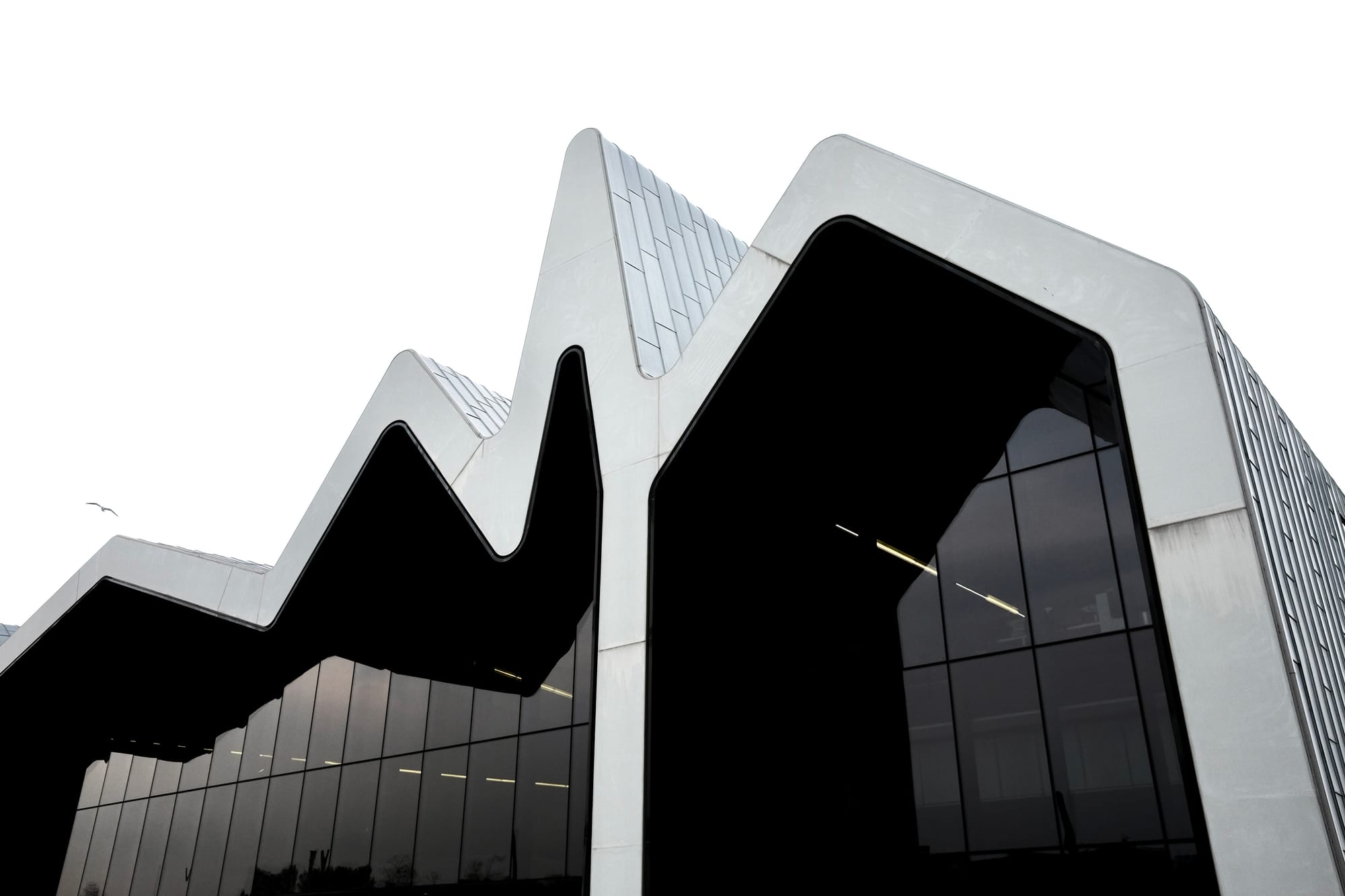
It's around six years ago, and we are sitting on a train tilting its way through the Lake District. We are heading, ultimately, over the Sound of Mull for our family holiday: cycling to Calgary Bay for walks on white sand, glimpsing a sea eagle.
But first a quick stopover in Glasgow, to break the long journey north from our home in England, and for my wife, J, to search for ancestors in the city of her birth. Having moved away aged two, she remembers little of her Glasgow childhood but is proud of her connection to the city and curious about her family’s history here.
After a night’s rest in a hotel, we divide up: J heads to the Mitchell Library to scour the records while I take our young son, G, to the confluence of the Kelvin and the Clyde. There, under the Riverside Museum’s zig-zagging roof, we watch models of famous Clyde-built ships circling a large glass cabinet. G rates each one, picking his favourite; I find it hard to comprehend how the vessels’ life-sized counterparts once slid down the now-silent slipways.
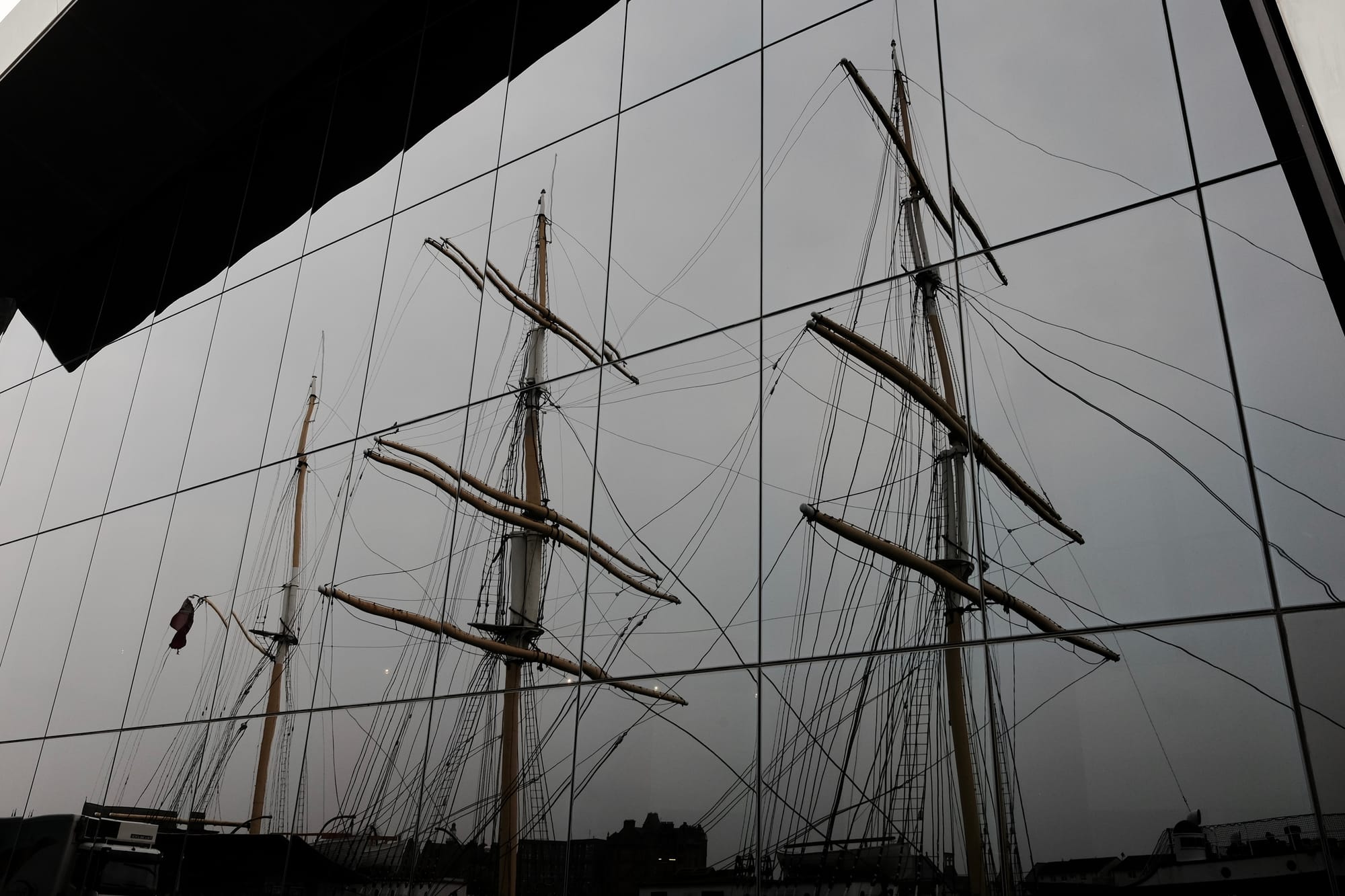
The murky waters of time, into which poor folk sink without trace, make J’s research difficult. But when we reunite with her at the hotel, she’s found an ancestor. He’s downstream in Greenock. At least, he was in 1832. Spidery handwriting in the poor relief records shows that Peter Kennedy was a fireman in a sugar house – a smoke-belching, soot-blackened refinery turning raw sugar from the West Indies into white gold. He worked shovelling coal into its boilers and would have seen little of the money that made his employer rich.
We don’t know exactly who that wealthy employer was; the records don’t say. Peter could have been employed at any of the ten different sugar houses in Greenock around this time. The country was in the final throes of the industrial revolution and sugar had been big business for centuries by the time he washed up on the banks of the Clyde looking for work.
The water that carried Peter to Glasgow also dissolves his story into those of the enslaved people on the West Indies sugar plantations. They endured inhumane conditions and sadistic punishments – shackled in irons for minor transgressions, hung or burned alive for more serious ones. Rape was commonplace.
Did Peter know any of this? Did he stare into the sugar house fires and see the hell across the water? Abolitionists certainly knew enough to speak out. Merchants knew enough to keep quiet and keep accumulating.
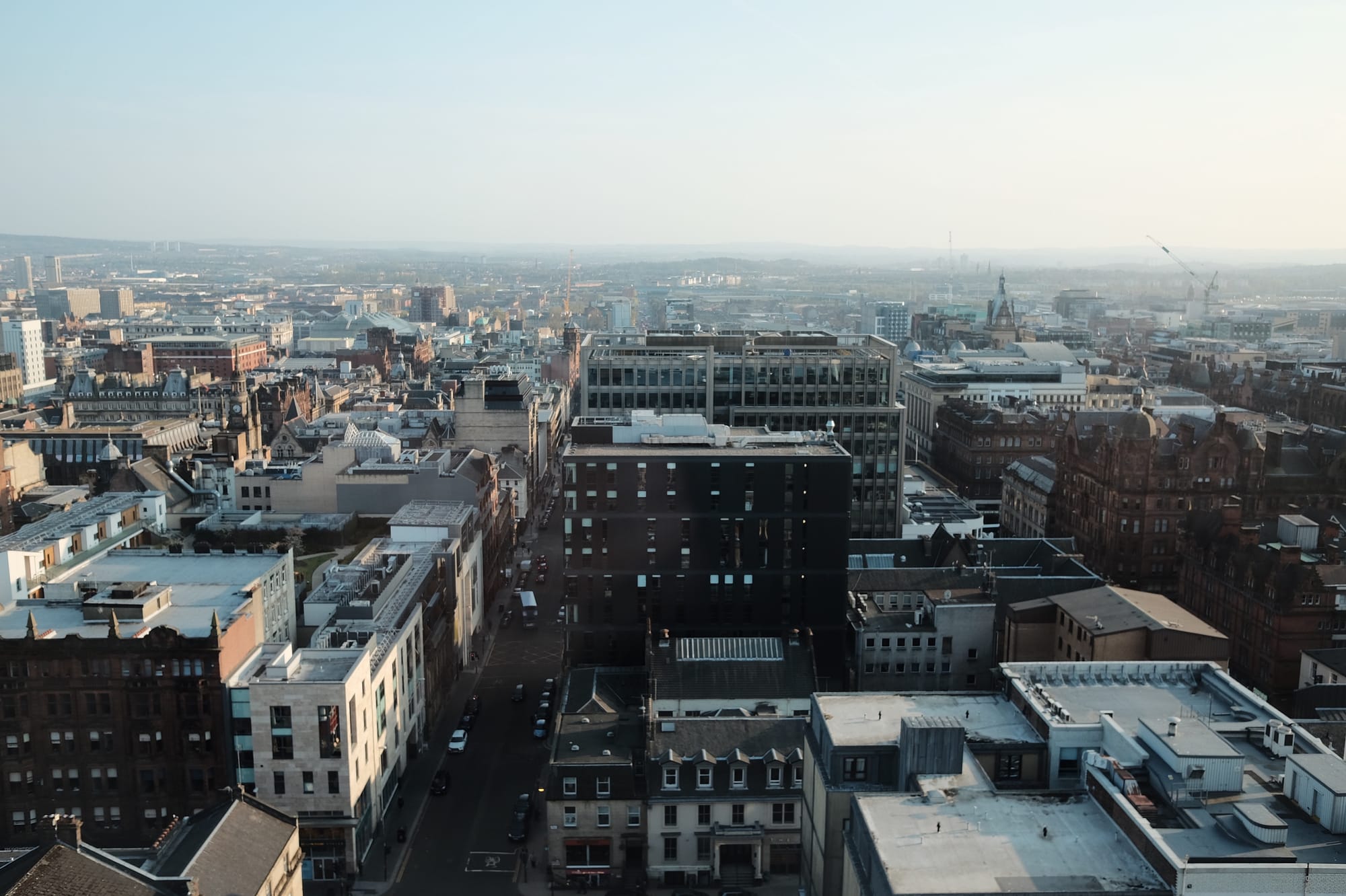
As G perches on the window seat in our hotel, the city behind him stretching down to the river, I reflect on how far the plantation owners’ tainted money washed through society. West Indies merchants invested their wealth in much of what we can see from the window: banking, property, canals, railways and more. As the poet and journalist John Mayne wrote during his time in Glasgow:
Hence, Commerce spreads her sails to a’
The Indies and America;
Whatever makes a penny twa,
By wind or tide,
Is wafted to the Broomielaw,
On bonny Clyde!
The uncomfortable truth is that getting rich is easier if you take things without paying. Sugar wealth was amassed by exploiting enslaved people, and it also relied on the unfettered burning of fossil fuels that the industrial revolution heralded. It took people’s humanity, and it took the planet’s resources.
‘Peter Kennedy, fireman in a sugar house in Greenock’. Those words in the Mitchell Library’s records have unstoppered this flood of thoughts. But there is hope, too, in the story of Peter and the tide of innovation he was swept up in. From those dark, coal-soaked waters emerged inventions with the power to shape a cleaner future. I use one of them the next day when we take a trip out to Falkirk.
The bicycle is the most energy-efficient form of transport ever invented. It’s more efficient than a train, than an electric car – more efficient even than walking. It doesn’t feel like it, though, as I undock the heavy hire bike and pedal into the wind along the towpath of the Forth and Clyde Canal. It feels like I’d struggle to outpace the towing horses that trod this path until the railways overtook them.
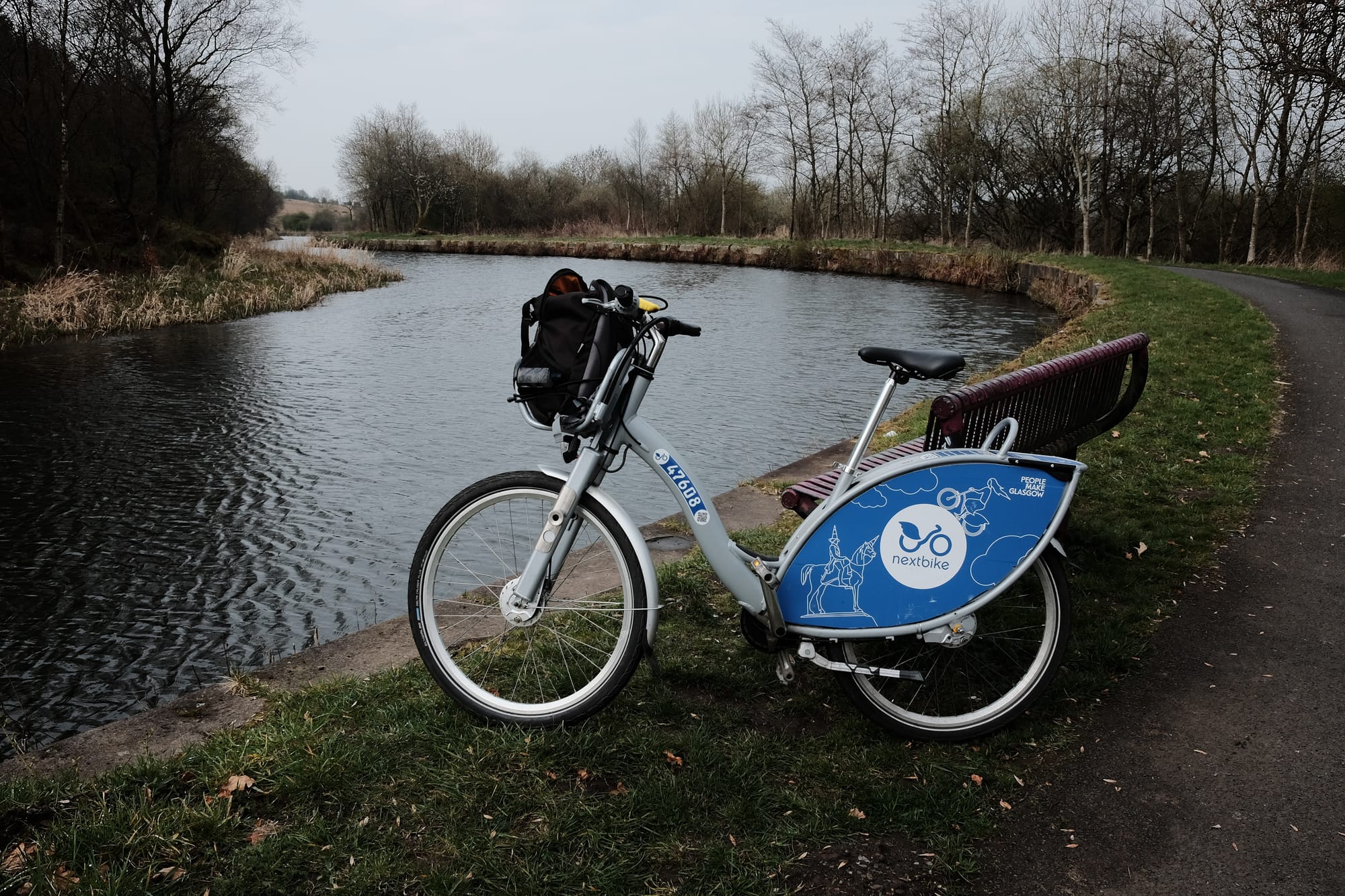
J and G have taken the train to Falkirk but I’m keen to explore under my own steam, to forge my own physical connection between the places we’re visiting. As I loop around Firhill Stadium, home to Partick Thistle Football Club, I gradually settle into the heavy rhythm of the towpath. The bike isn’t electric, so my ride is fuelled entirely by the hotel breakfast – a hearty bowl of porridge for the 76km round trip.
Before long my breakfast has taken me clear of Glasgow and I push on past Cumbernauld, nodding greetings to the handful of walkers and cyclists I pass. In a society that fetishises speed and consumption, they and I are engaged in the quietly radical act of powering ourselves slowly across the landscape. Lost in these subversive thoughts, I almost don’t notice I’m approaching my destination: the Falkirk Wheel.
Consisting of two gigantic axe-shaped arms joined to a spindle, this 35m tall steel boat lift was dreamt up in 1998 to re-connect the Forth & Clyde and Union canals. Until the 1930s, boats transferred between the two waterways by negotiating 11 locks, a task that took nearly a whole day. Then for the next 60 years there was no way up or down at all. The link was severed – until engineers re-invented the wheel.
It’s a dreich day and ripples scurry across the water beneath the boat lift, fleeing from the cold wind. I find J and G waiting for me by the visitors’ centre. The building’s glass catches their reflections. Beyond them – inside – the cafe looks enticing. We go into the warm, order three hot chocolates and sit by the window to watch the wheel in action.
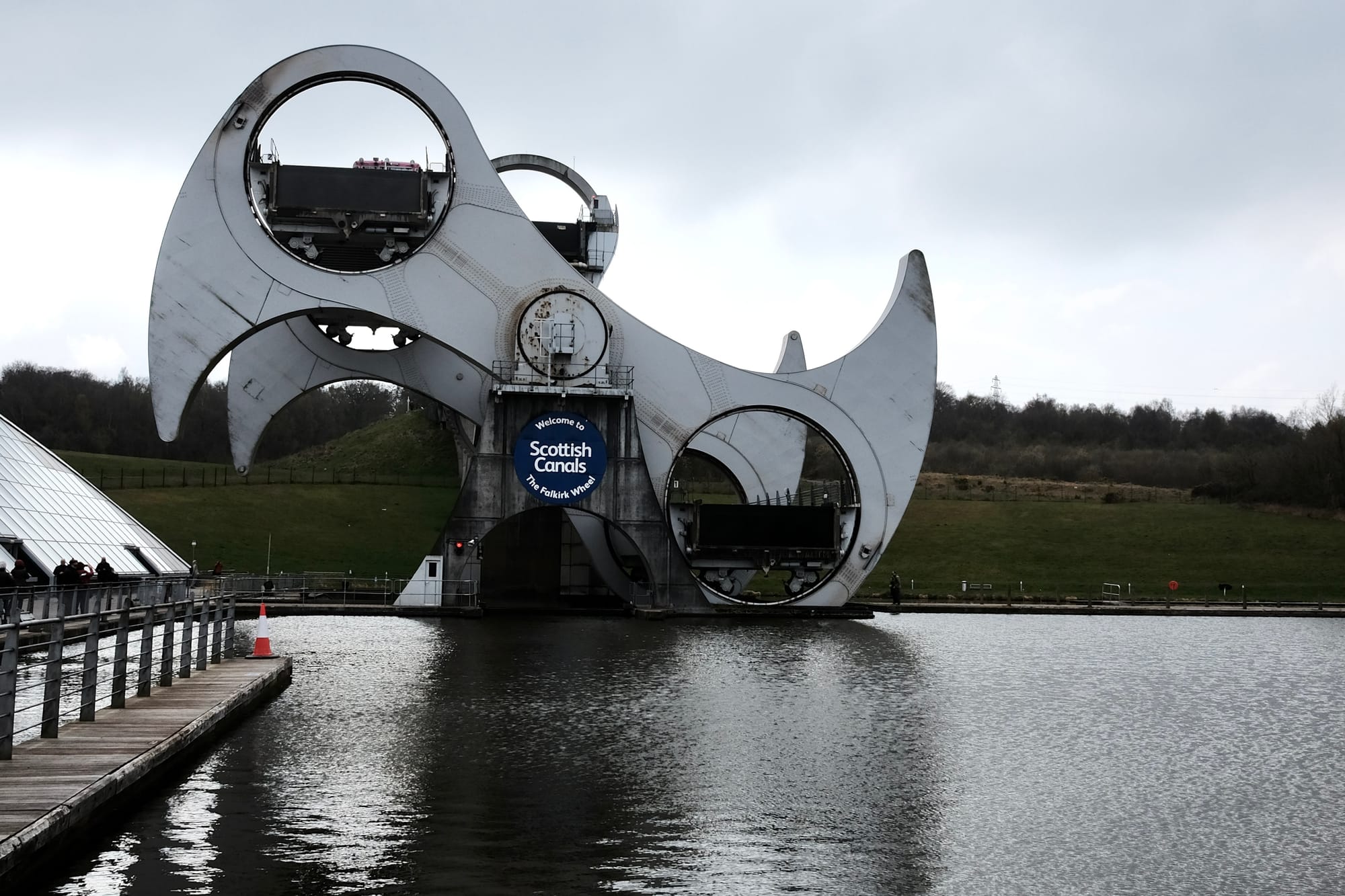
The only rotating boat lift in the world, the Falkirk Wheel has two gondolas that can each hold an Olympic swimming pool’s worth of water. Thanks to principles of displacement discovered by Archimedes, the two gondolas always weigh the same even if only one is carrying a boat. This balances the wheel so that its seven-minute rotation uses very little electricity – the same as it takes to boil eight kettles of water.
We linger for turn after turn of the wheel. It is hypnotic, wonderful – a timeless feat of engineering. We can’t drag ourselves away. Just one more turn. Just eight more kettles.
As I watch the final rotation, I think of how engineering skills first forged in Peter Kennedy’s time can help us swim against the tide of climate and ecological destruction today. Imagine if we could apply our wealth and knowledge resolutely to this challenge.
Wouldn’t that be the best way to end our stories of power and greed, of sugar and slavery?

